If you want a powerful, wearable display with a dash of augmented reality, but you don't want to strap on a goofy VR headset, XReal One Pro smart glasses might be the best option on the market. These sleek specs slip on like sunglasses and project a virtual 1080p big screen right in front of your eyes. It's undeniably cool, next-gen tech. But that “whoa” factor does not come cheap.
What are the XReal One Pro smart glasses?
XReal One Pro are a relatively lightweight pair of "sunglasses" that take the place of a display monitor by projecting the equivalent of a 170" TV directly into your eyes. They're like a personal, portable movie theater you can wear on your face and slip in your pocket.
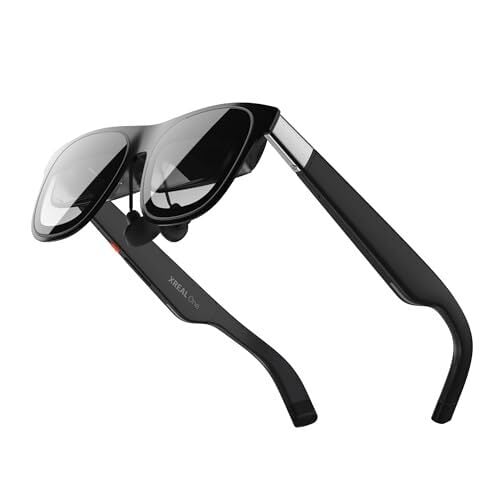
Design and comfort
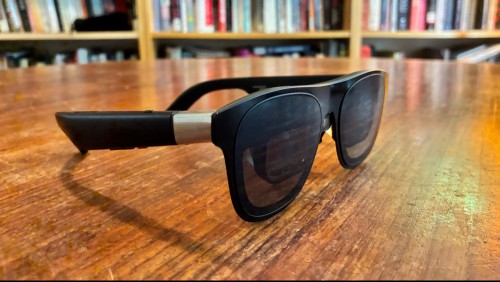
Despite the impressive tech packed inside them, the XReal One glasses look more like slightly bulky sunglasses than dorky sci-fi goggles. They’re thicker than a standard pair of shades, but not so girthy that you’ll draw stares on an airplane. My wife says she wouldn’t mistake them for regular sunglasses, but she might assume they’re some kind of therapeutic eyewear, like something you’d wear after cataract surgery. I'll let you judge:
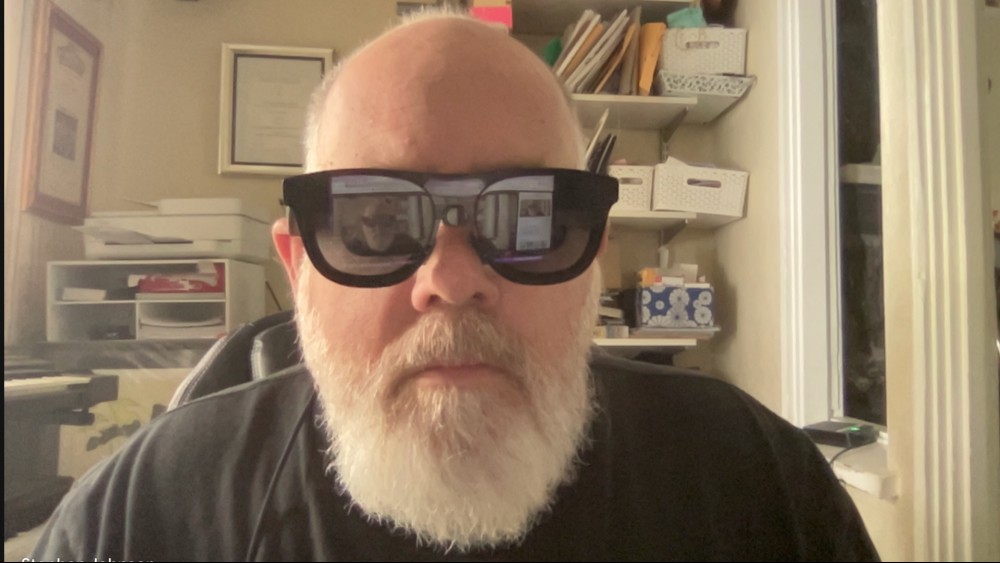
The build quality is top-notch. XReals are designed to be as light as possible, but they don't feel flimsy or have a “cheap plastic” vibe. Instead, they feel solid, sleek, and thoughtfully engineered. The tech is tucked neatly into the thicker arms and frame, and the controls are subtly integrated into the design. The overall impression is premium, to go with the price.
While the XReal One's weight of around 75 grams is definitely heavier than a pair of glasses, they're surprisingly comfortable. The weight is balanced, and the pressure points on the side of your nose are supported by adjustable silicone pads, so you can wear them for a few hours at a time without irritation.
If you wear glasses already, you can buy RX inserts from Hons VR that slide your prescription in front of the display. They're a snap to install and work well. Similar glasses on the market like the Viture Pro have focus dials to correct vision, a feature I'd love to see on XReal glasses.
Display and visual experience
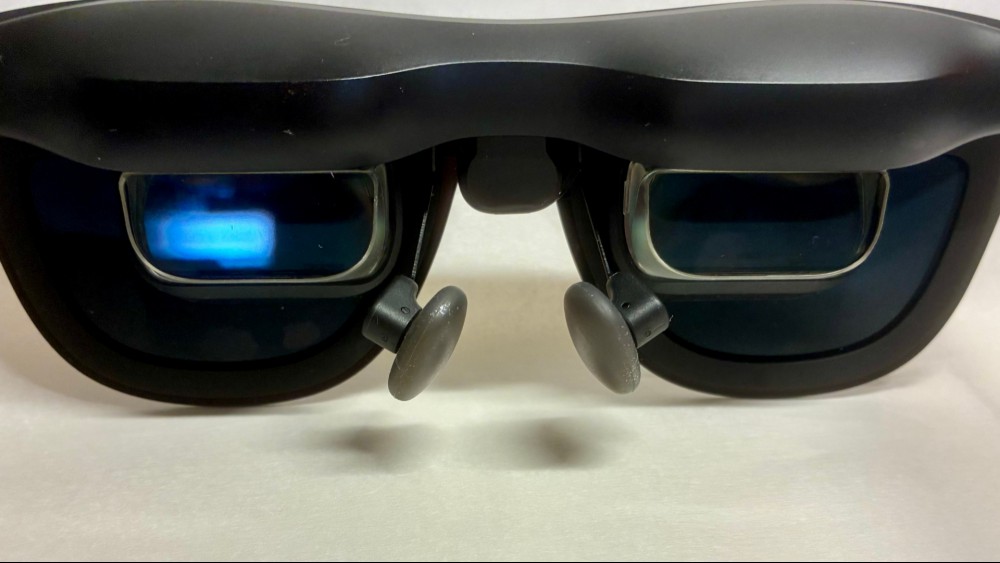
XReal One Pro glasses create the illusion of an HD display through dual micro-OLED displays that project light onto a prism that's reflected into the wearer's eyes. The result is a virtual 1080p resolution screen with 700 nits of brightness, a 57-degree field of view (50 degrees with less-expensive XReal One glasses) and a refresh rate of up to 120Hz. That means a big, wide screen floating before your eyes that you can use to watch movies, play video games, or get work done, without anyone else knowing what's going on in your glasses.
I really can't overstate how impressive the display is. The screen is bright, clear, and sharp enough to catch all the details in a movie, and it doesn't seem like it's "floating" or being projected either; it feels like a giant screen TV is physically there, in the same space you're in.
The XReal One Pro's 57-degree field of view is the largest of any pair of smart glasses on the market, and wider FOVs can come at the cost of image clarity, but that’s not the case here: The XReal's image stays sharp edge-to-edge. The brightness deserves praise, too. In a typical indoor setting, the display is more than bright enough, and the built-in electrochromic dimming lets you tap a button to instantly tint the lenses and block out the outside world. It's also a cool trick to show your friends.
That said, the all-important FOV is much better on VR headsets: the Meta Quest 3 headset offers a 100-degree FOV. Smart glasses aren't yet on that level.

You can pin your virtual monitor in a single spot, or set it to follow your head movement. Follow mode is smooth, with no lags or hiccups, even if you're moving fast. I've written this review using the XReal One Pro glasses as a secondary display screen, writing on my physical monitor and looking up to the virtual monitor pinned in my glasses for research, so I can attest that they work well for productivity. The text on the second screen is clear enough to be read, and there's no lag or any disruption between windows on my iMac. The text isn't as clear as my real monitor, but it's close, and more than enough to be useful.
Navigation and ease of use
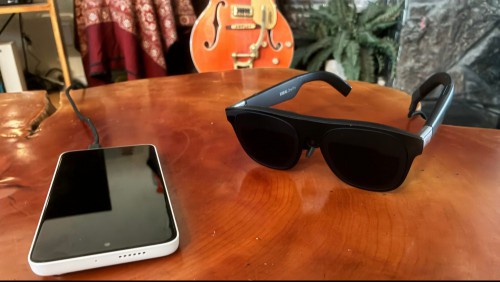
All the essential controls for XReal One Pro glasses, like adjusting screen size, brightness, and toggling modes, are built directly into the glasses. That’s convenient in theory, but in practice, it’s not an intuitive interface. With no touchscreen or dedicated remote, you're working with small buttons on the frame, so you'll spend some time wondering "how do I make the screen bigger again?" until it sinks in.
Navigation gets much easier with the Beam—a separate, Android-powered puck that acts as a companion device. Not only does it streamline access to settings and controls, it also unlocks spatial display features through the Nebula operating system. While Nebula is available for all Android devices, the Beam's software and hardware is dedicated to the Xreal, so it offers a better AR operating system experience than the version you can download on your existing Android device.
Sound quality
The built-in speakers encased in the glasses' arms are tuned by Bose and deliver crisp, balanced sound that's more than adequate for casual use: Dialogue is clear, music sounds fine, and there's no distortion at higher volumes. But open-air speakers have definite downsides compared to dedicated headphones or ear buds. The bass doesn't bass enough, your audio isn’t private, and the volume is limited. In a quiet room, the built-in audio is serviceable, but on a noisy airplane, you’ll absolutely need to pair your own Bluetooth earbuds or headphones.
And airplanes are the best place to use XReal One glasses. If you're a frequent traveler, they solve the problem of entertaining yourself on long, locked-down flights, as you can watch your own downloaded media on a huge screen in any position. The XReal One is worlds better than that little screen in the seat in front of you—as long as you remember the headphones.
Half of an AR experience
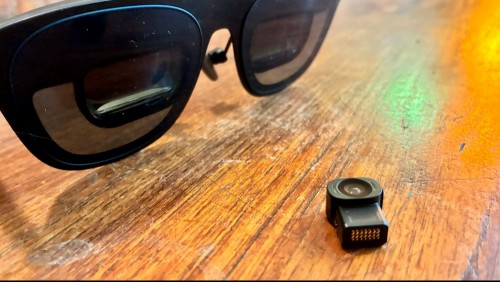
XReal glasses are advertised as "AR glasses" but they don't do a lot of reality augmentation at present. They're a 3DOF (three degrees of freedom) system, so they track rotational movements of a user's head, including the pitch, yaw, and roll. Setting the screen on "follow" results in a display that smoothly moves with your head movement, whether you're pacing around your house or just turning your head side-to-side. Those three degrees help lock the display accurately to your head.
XReal's Nebula 3D user interface offers another taste of what a spatial operating system might be in the future, but it's not a huge taste. You can have windows that seem to float in 3D space, and there are a couple of tech demos that make limited use of 3D, and that's about all.
The XReal One glasses are capable of even better spatial awareness, though. To unlock that, you’ll need to pair the glasses with the optional XReal Eye camera. In addition to adding photo and video functionality to the device, this module snaps onto the bridge of the glasses and adds 6DOF (six degrees of freedom) tracking—pitch, yaw, roll, forward/back, side-to-side, and up/down—allowing you to “anchor” a screen in 3D space and move around it.
6DOF opens the door to the kind of mixed reality you can only find on VR headsets, but right now, the possibilities aren't delivered upon; there aren't many uses for the Eye camera yet. Presumably more AR style features will be added in the future, but right now, it's just a glimpse of what’s possible, not the full experience.
Compatibility
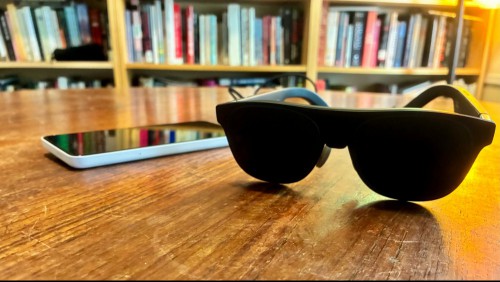
XReal's smart glasses are compatible with any device that supports USB-C video output. That includes most modern Android phones, newer iPhones (though not the iPhone 16e), laptops, and the Steam Deck. I tested the XReal One Pro with an iPhone and a MacBook, as well as the Beam, and in every case, the connection was fast and smooth enough for gaming, media playback, and getting work done with no noticeable lag.
If you want to use a device that doesn’t support USB-C video—like the Nintendo Switch or an Xbox—you’ll need an HDMI-to-USB-C adapter. It’s an extra step, but still very doable.
Overall, device compatibility is one of the XReal One Pro’s biggest strengths. It’s essentially plug-and-play with a wide range of hardware, and performance feels seamless across the board.
Price and value
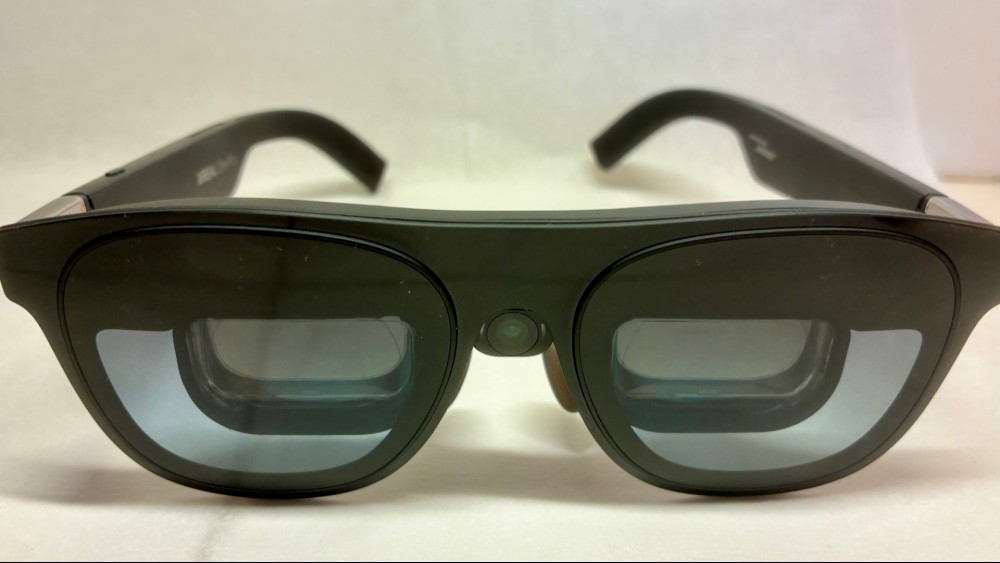
This is not a cheap piece of kit. The base-level XReal One starts at $499, while the higher-end Pro model (which I tested for this review) comes in at $649. Bundle it with the Beam controller—for unlocking spatial features and easier navigation—and you're at $698.
But the full XReal experience doesn’t stop there. Add the Eye camera ($99) for 6DOF tracking, the XrReal Hub ($39.99) for expanded device compatibility, and prescription lens inserts ($49), and you're looking at close to $900 total.
On the other hand, it's really cool. If you're a tech enthusiast, frequent flyer, or you want a second screen that’s portable and private, but you don't want to wear a dorky helmet to get it, this is probably the best option out there.
The XReal One Pro smart glasses deliver an impressive blend of cutting-edge display technology, solid design, and versatile compatibility, all packed into a lightweight frame that won’t make you look out of place. They represent one of the most compelling wearable display experiences available today. If you want a private, portable second screen without the bulk of a VR headset, the XReal One Pro is a standout choice.
Covering smart glasses, VR headsets, popular culture, and more.
